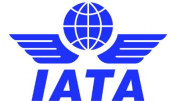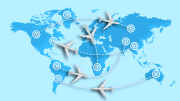Dear Media Friends,
“When you have a great and difficult task, something perhaps almost impossible, if you only work a little at a time, every day a little, suddenly the work will finish itself” – Karen Blixen
When I first read this quote, by the famous author of Out of Africa, little could I know how well it suited the challenge of the air transport decarbonization process! Flying net zero is a fiendishly difficult task that will happen because of systematic, small steps that we will pursue. For that reason, it is with this quote that I intend to open every monthly newsletter reporting to you the progress toward net zero CO2 emissions by 2050. Step by step.
So please let me warmly welcome you to our first 2022 monthly update!
Sustainable aviation fuel (SAF)
When we announced our industry commitment to reach net zero we explained that SAF will be the most important contributor to CO2 reduction. We need to increase the use of SAF exponentially, and progress is continually being made in production and uptake. Since the turn of the year, Turkish Airlines announced a regular SAF flight between Istanbul and Stockholm. KLM started regular SAF flights with the option for passengers to pay a surcharge to purchase extra SAF. And JetBlue announced a Sustainable Travel Partners program to increase SAF uptake.
New technology
In addition to reporting on SAF usage, we also want to share with you the progress in exciting new technologies, especially advances in electric and hydrogen zero-emissions propulsion. The recent announcement by Rolls Royce that their ‘Spirit of Innovation’ plane had set verified world records for an electric plane, including a top speed of 555.9km/h (345.4 mph), shows the tremendous potential of electric flight. Please see here a video of this astonishing project.
Offsetting & Carbon Capture
Until zero-emissions technologies become widely available, offsetting and carbon capture will remain an essential part of our plan. The Carbon Reduction and Offsetting Scheme for International Aviation (CORSIA) is an essential element of capping industry emissions pending the ramp-up of SAF. Meanwhile, airlines continue to invest in offsetting schemes on behalf of passengers. Etihad are the latest to reveal a new corporate program to encourage sustainable choices, including offsetting and SAF options …and finally, in December Elon Musk announced that he would be looking at carbon capture technology to power his SpaceX rockets.
Ghost flights
In Europe there has been much focus on the issue of so-called ‘ghost flights’. While the EU’s slot rules are certainly contributing to flights occurring with low load factors, it is incorrect to label these as “empty” flights. Our Director General Willie Walsh explained the situation in a blog and you can also see him commenting in this video.
Focus on…
Robert Boyd, Assistant Director, Energy Transition and Policy, IATA
Robert has led IATA’s work on Sustainable Aviation Fuels for over eight years. Prior to that, he was Principal Economist at Virgin Australia. A son of Australia, when Robert is not thinking of ways to increase the uptake of SAF he can usually be found riding his bike up steep alpine roads, or enjoying adding to (or subtracting from) his wine collection.
What is IATA’s role in pushing for greater production and uptake of SAF?
Despite not producing SAF, IATA has an important role in guiding its development. To produce SAF it takes a variety of different stakeholders from the airlines (the buyers) to the feedstock suppliers, technology companies, SAF producers, logistics firms, financial institutions and governments. IATA plays a role in bringing all of these organizations together, sometimes doing matchmaking and importantly, upholding the technical and sustainability standards that airline passengers and the wider community expect. Increasingly, IATA has been actively engaging with policy makers to help design policies that support accelerating the global deployment of SAF.
What is the current biggest challenge in boosting SAF production?
On average, the cost of producing SAF is greater than conventional jet fuel. This is the greatest impediment to an instant ‘flick a switch’ transition. But it is more complex than this, as there are more than 50 different SAF feedstock and technology combinations that can be applied. Geography, cost of labor and regulatory frameworks all add to the cost complexity. The complexity of the SAF production system is a challenge, but one that is becoming quickly understood for the opportunity. Already today, some long-term offtake agreements have been inked as cost competitive.
What progress will have been made by 2025?
If you take a flight in 2025, there are decent odds that some SAF will be in the tank. There will have been more than one million flights and production will have swollen some 50 times from 2021 volumes. About 50 airports will have some SAF in the system and the next wave of production facilities will have been announced focusing on industrial waste gases, waste agricultural and forestry material, and aviation will be regularly turning household rubbish into jet fuel.
What surprising fact should everyone be aware of regarding SAF?
There is a SAF-compatible feedstock option in more than 90% of countries in the world. Today, the vast majority of countries import jet fuel. The future will be combining international technology with local feedstock to produce SAF locally and provide a degree of energy security that has been hitherto a dream.
Source : IATA












Be the first to comment on "Net Zero Media Newsletter"